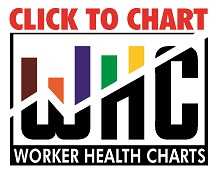Adult Blood Lead Epidemiology and Surveillance (ABLES)
Related Resources
Related NIOSH Pages
NIOSH Pocket Guide to Chemical Hazards (NPG)
The NPG is intended as a source of general industrial hygiene information on several hundred chemicals/classes for workers, employers, and occupational health professionals.
Occupational Health Guidelines for Chemical Hazards
These guidelines summarize information on permissable exposure limits, chemical and physical properties, and health hazards.
Other Related Resources
CPWR. The Center for Construction Research and Training.
Lead research and training programs.
Council of State and Territorial Epidemiologists (CSTE)
For more than five decades, the Council of State and Territorial Epidemiologists (CSTE) and the Centers for Disease Control and Prevention (CDC) have worked together in partnership to improve the public’s health by supporting the efforts of epidemiologists working at the state and local level by promoting the effective use of epidemiologic data to guide public health practice and improve health. CSTE and its members represent two of the four basic components of public health – epidemiology and surveillance.
International Chemical Safety Cards (ICSC)
An ICSC summarizes essential health and safety information on chemicals for their use at the “shop floor” level by workers and employers in factories, agriculture, construction and other work places. They are not legally binding documents, but consist of a series of standard phrases, mainly summarizing health and safety information collected, verified and peer reviewed by internationally recognized experts, taking into account advice from manufacturers and Poison Control Centres.
CDC’s Childhood Lead Poisoning Prevention Program
CDC’s Childhood Lead Poisoning Prevention Program is committed to the Healthy People 2020 goals of eliminating blood lead levels ≥ 10 µg/dL and differences in average risk based on race and social class as public health concerns.
OSHA Safety and Health Topics: Lead
National Emphasis Program to reduce occupational lead exposures
- Page last reviewed: August 10, 2017
- Page last updated: August 10, 2017
- Content source:
- National Institute for Occupational Safety and Health Division of Surveillance, Hazard Evaluations, and Field Studies



 ShareCompartir
ShareCompartir